One uneventful day, I was checking out the Arakai Tea Estate‘s Instagram feed, and I noticed this picture.
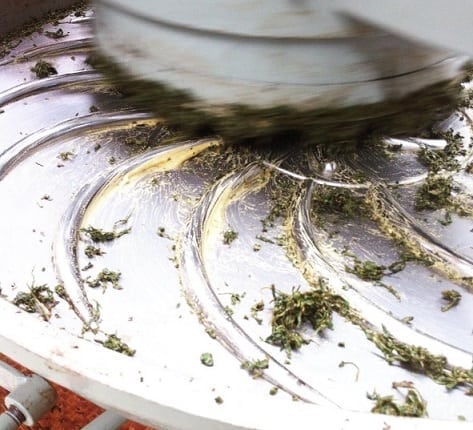
Image owned by the Arakai Estate.
Simply put, they were showing how their black tea was rolled. They also left a humorous anecdote about the foam that formed as a result of the rolling . . . and wondered (jokingly) if it had any possible pharmaceutical application. I could only think of one.
“I’d freebase it,” I commented.
To which they replied, amusedly, “The value of this foamy stuff just went up ten-fold!”
What does this have to do with their farm-grown, Australian green teas? Er . . . I was foaming at the mouth after trying them? Yeah, that’s a smooth segue. On to the green teas!
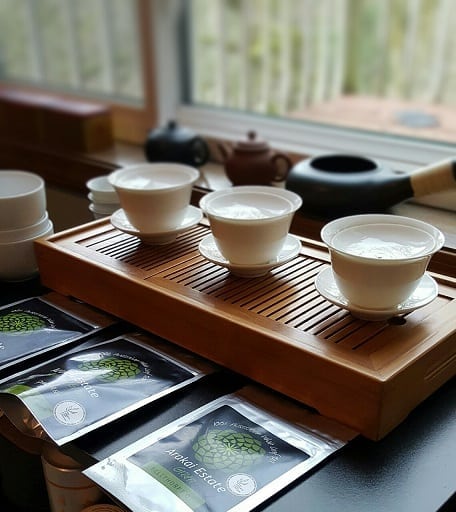
As with the black teas that I wrote about a couple of days ago (before this writing), the Australian garden also passed along three green teas of different years and make. Two teas were from 2016—a normal one from their spring pluck, the other pan-roasted—and another spring offering from 2015 for comparison.
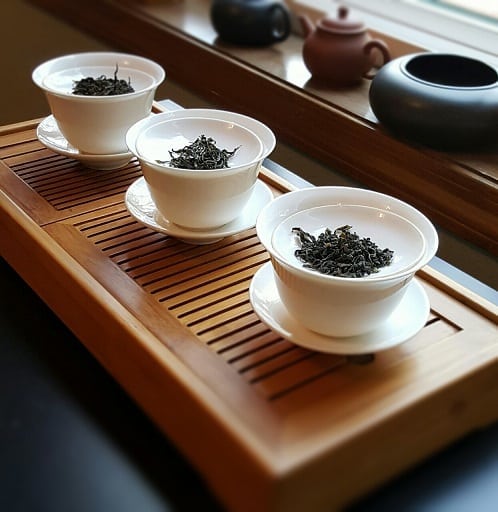
For consistency, I decided to go in the same order I did with their black teas; from oldest, to youngest, to weirdest. Worked out pretty well last time. And for brewing, I approached them a bit like a sencha. I used roughly a heaping teaspoon of leaf per 6oz. gaiwan, water heated to 175F, and a steep time of one minute.
Spring, 2015
The leaves were just as I expected, given my earlier notes about the Summer, 2016. They were medium-length and varied in their twistiness, bold in their myriad shades of green. Some were more open, others more rolled, and they all gave off an aroma that just screamed, “It’s Spring, baby!”
The same aromatic notes were there, too—herbal citrus, tropics and dashes of mild mint. But they were somehow . . . fresher. If these were a year-or-two old, they didn’t show it in the aroma. It was like they’d been put in cryo-sleep and re-awakened as fresh as ever.
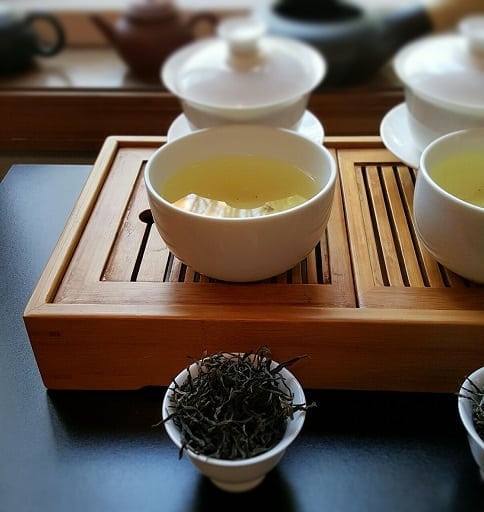
The liquor brewed up to a lovely, light-to-medium yellow-green with a familiar lemongrass-like aroma. As predicted, it was a lot like the summer flush in this regard, but a lot “younger”-seeming in its aromatic delivery. On flavor, that same tropical citrus bend came through yet again, making me yearn for springtime weather even more. What I did not expect was the creamy underpinning throughout the sip. Was that due to the added year of maturity? Dunno.
Spring, 2016
The leaves for the 2016 looked . . . just about the same as the 2015. They smelled the same, too. Color palette was also similar, a collage of forest-y greens. The only difference I could find was in the shape—less of the leaves were open-faced, and were twistier overall. That and the overall aroma was deeper, creamier, and nuttier (in both senses of the word).
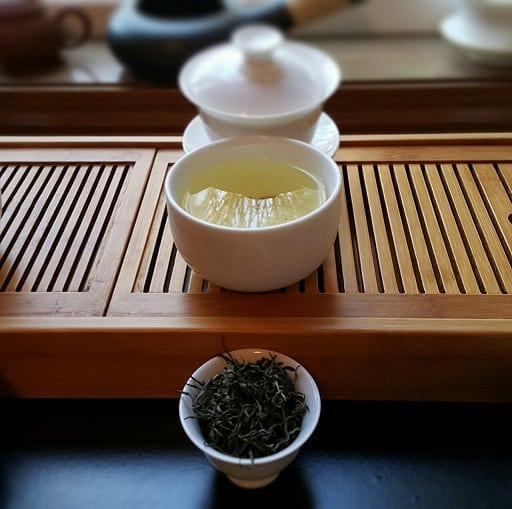
The liquor for the 2016 brewed up lighter than the year prior. I wondered for a moment if I used to little of leaf for the brew. That minor dread passed, however, once I took a whiff. Nope, it was just as robust as the 2015, if not more so in that whole vanilla-nut aroma thing. The flavor reflected that as well with similar notes on taste. It had the same citrusy introduction as the 2015, save for a creamy-silky-nutty foundation that quickly took over in the top note. The trail off was smooth, robust and lingering.
Pan-Roasted, 2016
The pan-roasted might as well have been a brother (or sister) from another mother (or mister). The leaves resembled Chinese Mao Feng—more balled in shape than twisty, a more uniform, dark green color. The fragrance was also—while not roasty—just nutty and grassy. Not much of the spring citrus from the “nekkid” green teas showed up to play with my nose.
This version brewed up considerably darker than the unroasted leaves. Gee, what a shock! The green soup palette was so dark, it barely qualified as “green” anymore. This was straight-up oolong amber. Keep in mind, I only brewed it for a minute.
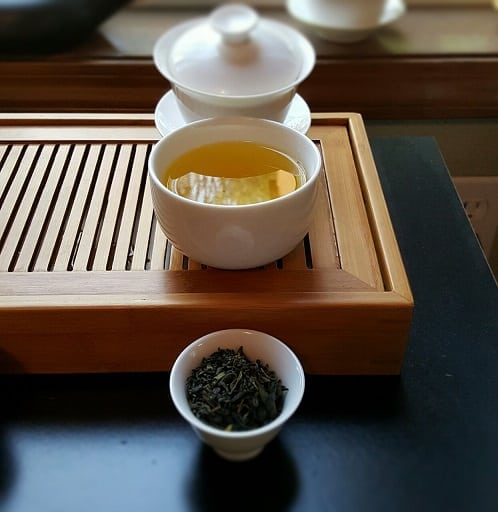
Smelling it was like traveling to some Chinese cave. Y’know, the type of place that was the origin story for—I dunno—half the Chinese green teas out there. Sure, I’m exaggerating, but what is it with green tea myths and caves? I’m digressing.
The aroma was all Chinese pan-fired goodness, but . . . different. Not sure how to articulate this, but it was a scent I associated with Japanese pan-fired greens—like tamaryokucha or kamairicha. The Japanese tea bush cultivars used for this might have something to do with that comparison. The taste was . . . whoah! What a punch!
Extremely bitter. But it mellowed out in the middle to something more like maple-lathered macadamia nuts. The Arakai folks warned me to do a short steep for the first one. I messed that up, hard.
I decided to try again. This time . . . a gongfoolish twenty-second steep . . . with slightly hotter water.
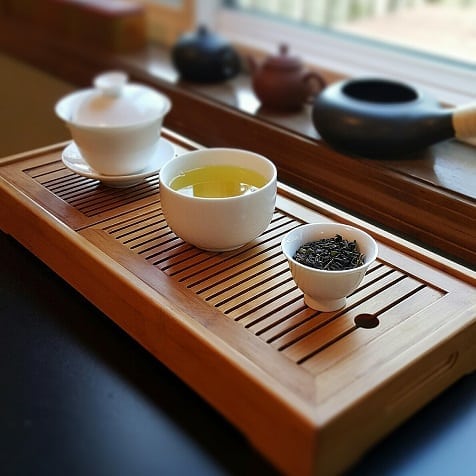
The liquor was radioactive green, like a Japanese sencha. The aroma was mild, creamy vanilla-dipped lemon meringue. While there was a slight bitter tickle on the front, that mellowed out immediately to . . . the creamiest/silkiest green tea I’ve ever had in my life.
Favorite?
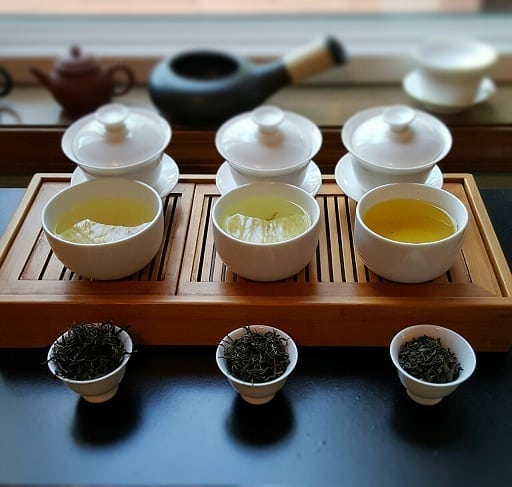
Gotta give it to the 2015 green tea. Sure, the 2016 was a more layered, nuanced and fuller-bodied cuppa, and the pan-roasted was really silky-smooth once I found its sweet spot, the 2015 just hit all the plucky springtime notes I was looking for that day. They’re all great—hell, excellent!—but that one spoke to me subjectively.
As to future ways of futzing around with the leaves? . . . I have one suggestion. If they’re listening . . .
Arakai is also a timber farm, right? That means plenty of Auracaria conifers, right? That means . . . leftover firewood, maybe?
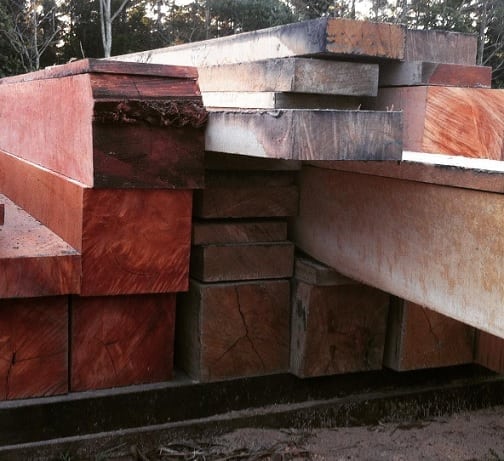
Image owned by the Arakai Estate.
You know where I’m going with this.
SMOKED TEA!!! C’mon, look at those leaves; they’re asking for it!
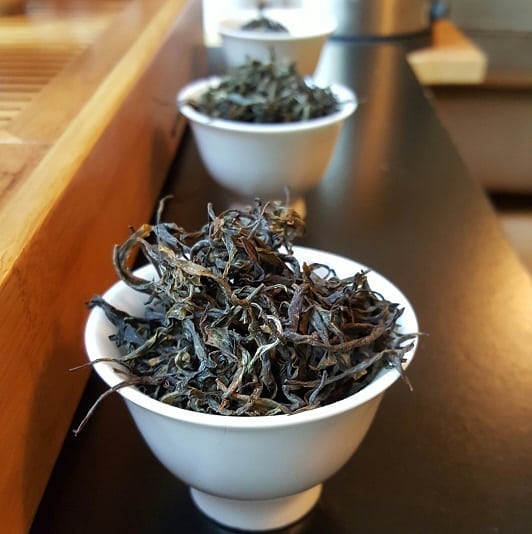
Okay, then . . . can I at least ride the bike harvester someday?
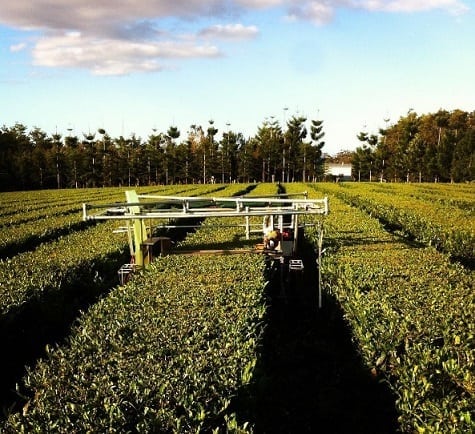
Image owned by the Arakai Estate.
What do you mean it has a restraining order against me?
For more information on the Arakai Estate, go HERE.
And congratulations to the Collinses to the new addition to their family!

Xavier
A smoked tea? I would take that one.